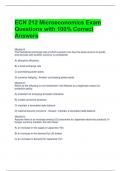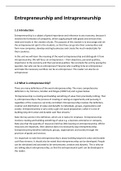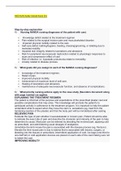Tentamen (uitwerkingen)
ECN 212 Microeconomics Exam Questions with 100% Correct Answers
- Vak
- Instelling
ECN 212 Microeconomics Exam Questions with 100% Correct Answers Module 9: The theoretical exchange rate at which a person can buy the same amount of goods and services with another currency is considered: A) allocative efficiency B) a fixed exchange rate C) purchasing power parity ...
[Meer zien]






